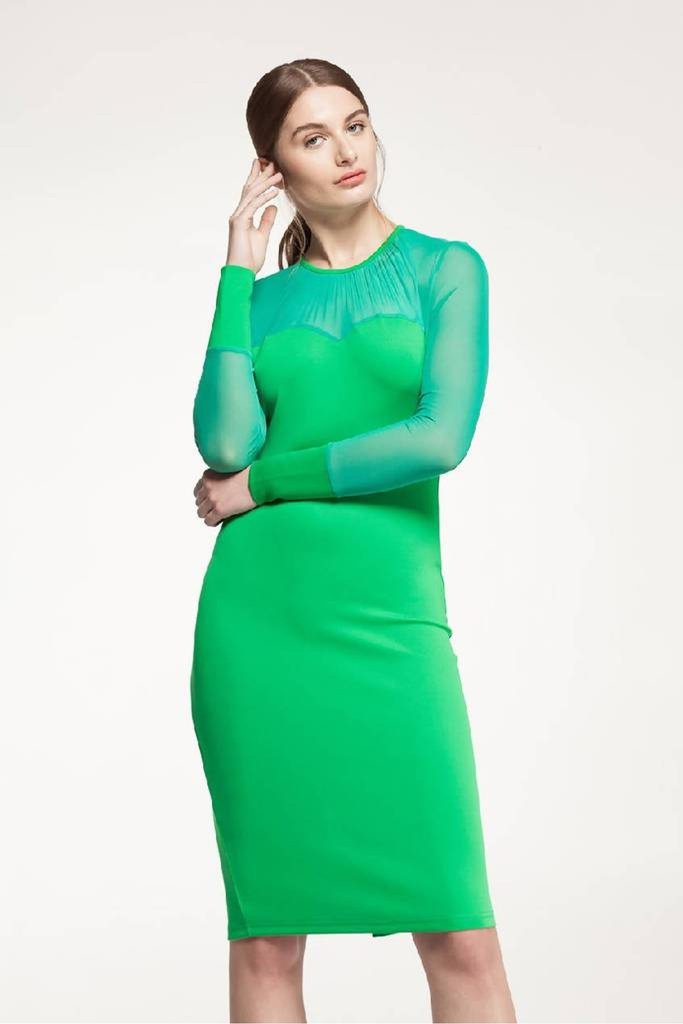DIFFERENT TYPES OF MIDI DRESSES AT GODDIVA
There is a wide range of sorts of midi dress – here are the
absolute most well-known ones.
LONG
SLEEVE MIDI DRESS
Long-sleeve Midi dresses give solace and covering during the
cooler months of the year. They look tasteful and flaunt your bends without the
snugness of a bodycon dress.
TRIM MIDI
DRESS
Trim midi
dresses are exquisite and ideal for formal occasions. These dresses are
planned with ribbon texture in some limit and are normally lined to make a
practical, very much planned garment.
MIDI WRAP
DRESS
A midi wrap dress has a tie around the midsection region,
normally sitting on your hip. Midi wrap dresses
permit you to tweak how close you need the dress to lounge around your
waistline. This look is complimenting for some, body types.
BODYCON
MIDI DRESS
A bodycon midi dress is a tighter midi dress. It sticks
to your body to emphasize your characteristic bends, like your hips, abdomen,
and goods region.
BARDOT
MIDI DRESS
A Bardot Midi dress is an off-the-shoulder dressy look.
Bardot Midi dresses
are a well-known style for weddings and during the periods of spring and
summer.
History
of the Midi Dress
The historical backdrop of the midi dress is
fascinating. The possibility of the midi dress has been around for quite a long
time, as it was not a one-of-a-kind development. It was only a dress that was
shorter than your lower legs.
The 1900s
Before the mid-1900s, everybody wore dresses to their lower
legs or ankles. It was not appropriate to show your lower legs, so everybody
put resources into longer articles of clothing. People assumed that an
individual who was poor or in the lower working people on the off chance that
you wore a midi dress.
Poor people or the middle class couldn't stand to purchase
new dresses for their developing youngsters, so they would need to wear dresses
that didn't fit well or resembled a midi dress.
1910's
and 1920's
Notwithstanding, around the mid-1910s and '20s, hemlines
started to get shorter, and shorter dresses turning into the standard for most
ladies to wear. Flapper dress made its presentation in 1927, that dresses is
short as your knees to wear.
1940's
The flapper stage didn't keep going forever. By the
mid-1940s, midi dresses had become well known again as the suitable standard
length for dresses. Midi
dresses were viewed as a presentation of womanliness and tastefulness
without revealing excessive skin.
1960's
The main change to dresses came around the 1960s when ladies
pushed to change their closet and not adjust to the design or styles they were
advised to wear.
Ladies started to wear a wide assortment of dresses,
including the little, midi, and maxi style dresses. Starting there, midi
dresses fell all through the design scene, typically seeing a reoccurrence
around spring and the late-summer season.
WEARABOUT?
In case you're looking for another look and don't
effectively possess midi
dresses, it's an ideal opportunity to join this excellent pattern into your
closet. Be that as it may, what is a midi dress? Today we will discuss this
wonderful dress, with different types for styling them.
There are various assortments and choices accessible with midi dresses to
accommodate your body type and inclination. In addition, they look very
adorable to wear in any season, as they can be spruced up with pullovers and
boots or dressed down with a couple of shoes.
A midi
dress is a dress that transcends the lower legs yet falls underneath the
knees, also called the mid-calf. There are different examples and styles to
look over to accommodate your body shape and design inclination.
A midi dress isn't equivalent to a maxi dress. The main
distinction between a maxi dress and a midi dress is that a maxi dress will
fall right down to the floor or the lower leg, while a midi falls in the
mid-calf region.
Midi
dresses are best to wear in any season as they are of different materials
and examples. Midi dress is easy to wear by adding coats and adornments or an
independent piece, just requiring a couple of shoes.
THE MOST
EFFECTIVE METHOD TO CHOOSE A MIDI DRESS
At the point when you're looking or looking for a midi dress, it's
significant that you pick a dress that accommodates your design inclination and
can be handily styled. Here are a couple of tips you ought to follow while
looking for a midi dress.
THINK
ABOUT THE LENGTH
You need to ensure that you don't accept a dress that hits
the center of your calf, which is normally the amplest piece of your leg. It
will make you look square-shaped while making the dress look longer than it is.
To purchase the correct length, you'll need to verify where
it falls on your legs. The ideal region is a couple of creeps over the lower
leg or a couple of crawls beneath the knee. Pick the correct fix since it will
decide the general look and feel of your dress.
HOTSHOT
YOUR WAIST
On the off chance that you wear your midi dress the
incorrect way, you can be concealing your bends which won't flaunt your figure
well. Midi dresses are regularly matched with a belt since they will finish the
look and hotshot your waistline.
In case you're purchasing a bodycon dress, this probably
won't be necessary, because your curves will show through the garments.
Notwithstanding, if you need to flaunt your bends further, you can add a thick
belt to a bodycon dress.
LONG TERM
THINKING
You need to buy pieces that you will wear on different
occasions, and that can be styled differently, for example, by adding some
adornments or wearing a coat with it. Ensure that this is a piece you'll
appreciate wearing on various occasions. Try not to purchase something you
don't adore.
FEATURE
YOUR NECKLINE
Midi dresses offer countless various sorts of approaches to
flaunt your highlights, explicitly your neck area. Think about strapless,
sleeveless alternatives or a low back slice to show your neck area. Pick the
style that feels generally great to you since it's tied in with feeling like
your best self.
maxidresses, mididresses, mini dresses,
Plus size dresses,





Comments
Post a Comment